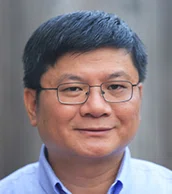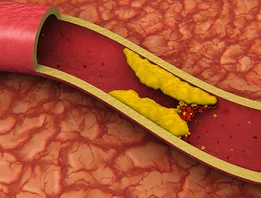


Long-term transplant graft survival remains an unsolved issue and a limitation leading to poor survival rates, debilitating clinical conditions and an unsatisfactory quality of life for the transplant recipients.
How long a patient survives post-transplantation depends on numerous factors, including the type of organ transplanted, donor source and recipient health. For instance, while approximately half of kidney transplants continue to function for more than 10 years, lung transplants typically have shorter functional durations.
Wenhao Chen, PhD, Associate Professor of Transplant Immunology in Surgery, identified a population of stem-like T cells that continuously replenish effector precursor T cells responsible for transplant rejection. This crucial finding suggests that targeting the population of stem-like T cells could pave the way for the end of organ rejection and life-long survival for the transplant recipient. Targeting this population could also reduce the incidence of autoimmune diseases, including ulcerative colitis. These findings were recently published in the peer-reviewed journal Nature Immunology.

Wenhao Chen, PhD
“CD4+ effector precursor T cells serve as a continuous source for the generation of effector cells. Targeting these stem-like CD4+ effector precursor T cells could be a new strategy for eliminating allogeneic or other deleterious T cell responses,” said Chen.
T-cell response occurs after antigen exposure. Most tissue and organ transplants are allografts — grafts taken from donors and transplanted into genetically different recipients of the same species. These contain alloantigens—types of antigens that generally differ among individuals, such as HLA, which can trigger a T-cell response. The alloantigen-activated T cell response is a crucial component in transplant rejection.
In the absence of antigen, naïve CD4+ T cells remain naïve and there is no T-cell response. Upon encountering the alloantigen, the CD4+ T cells are activated and differentiate into effector helper T cells. Not all T cells recognize transplant antigens. The dynamics of the antigen-specific T-cell response have been extensively studied. However, the mechanisms that drive T cell effector programs and how the effector T cell sub-population is sustained for long periods are not known.
“There are a few gaps in our understanding,” said Chen. “Although short-term graft survival has significantly improved in the last two decades, long-term graft survival is severely limited, and graft rejection is a major reason for the long–term loss of grafts.”
Effector T cells are short-lived. Yet, the immune response is sustained in the patient receiving the transplant. As a transplant immunologist, Chen wondered how the alloreactive T cells always persist in the recipient.
Chen and his team performed single-cell RNA sequencing in alloantigen-specific CD4+ T cells post-heart transplantation from the spleen and heart in a murine model to detect transcriptomic changes. Two major alloreactive CD4+ T cell populations were found: stem-like effector precursor T (TEP) cells and effector cells. The TEP cells had the capacity for self-renewal and the potential to differentiate into effector cells whereas the effector cells lacked proliferative ability, became prone to apoptosis, and did not persist.
CD4+ effector precursor T cells serve as a continuous source for the generation of effector cells. Targeting these stem-like CD4+ effector precursor T cells could be a new strategy for eliminating allogeneic or other deleterious T cell responses. If we can find a way to eliminate the stem-like T cells specific for the transplanted organ, there would be no organ rejection. Currently, transplant patients have to take immunosuppressive drugs every day. There will be no need for immunosuppressive drugs daily if we can find a way to delete the stem-like T cells activated by alloantigens. This system should work in all T-cell responses including ulcerative colitis and autoimmune diseases.
Wenhao Chen, PhD
Associate Professor of Transplant Immunology in Surgery
“The big contribution of our study is identifying the stem-like T cells as the “troublemakers” responsible for transplant rejection. We call these T cells ‘stem-like’ because they behave like stem cells. Of course, they are not stem cells,” Chen explained.
Some key molecules involved in determining this intrinsic stem-like program are transcription factors T-cell factor-1 (TCF-1) and interferon regulatory factor 4 (IRF-4), and the metabolic enzyme lactate dehydrogenase A (LDHA). Using knockdown models, Chen demonstrated that TCF-1 is a crucial determinant of the self-renewal capacity of the TEP cells. On the other hand, IRF4 and LDHA are important for effector differentiation.
Future directions would include investigating techniques and consequences of deleting the stem-like CD4+ T cells to test the hypothesis that deleting these stem-like T cells will lead to cessation of graft rejection.
“If we can find a way to eliminate the stem-like T cells specific for the transplanted organ, there would be no organ rejection. Currently, transplant patients have to take immunosuppressive drugs every day. There will be no need for immunosuppressive drugs daily if we can find a way to delete the stem-like T cells activated by alloantigens. This system should work in all T-cell responses including ulcerative colitis and autoimmune diseases as well,” Chen noted.
Dawei Zou, Zheng Yin, Stephanie G. Yi, Guohua Wang, Yang Guo, Xiang Xiao, Shuang Li, Xiaolong Zhang, Nancy M. Gonzalez, Laurie J. Minze, Lin Wang, Stephen T. C. Wong, A. Osama Gaber, Rafik M. Ghobrial, Xian C. Li & Wenhao Chen. CD4+ T cell immunity is dependent on an intrinsic stem-like program. Nat Immunol. 2024 Jan;25(1):66-76. doi: 10.1038/s41590-023-01682-z.
This study was supported by internal funding from Houston Methodist Research Institute (to W.C. and S.G.Y.) and the US National Institutes of Health grants (R01 AI132492 to W.C. and R01 AI129906 to X.C.L.). The authors thank the staff at the Single Cell Genomics Core at Baylor College of Medicine (partially supported by the National Institutes of Health shared instrument grants (S10OD023469 and S10OD025240), P30EY002520 and CPRIT grant RP200504), the Biostatistics and Bioinformatics shared resources at Houston Methodist Neal Cancer Center and the Houston Methodist Flow Cytometry Core Facility for excellent services. Schematic diagrams of experimental design were created with BioRender.com.
Abanti Chattopadhyay, PhD
October 2024
Related Articles








